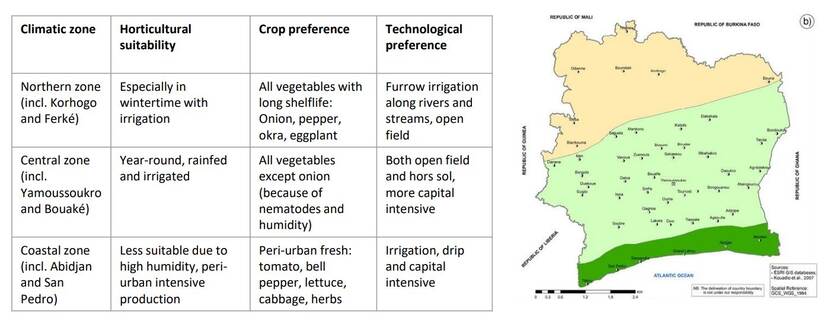Côte d’Ivoire: the resonance of the vegetable sector in the Northern region
In 2021, Northern Côte d’Ivoire experienced a surge in business and development opportunities within the vegetable sector. Data from this year paints a vibrant portrait of a region pulsating with potential, despite the challenges that came its way.

This verdant belt, nourished by the generous Ivorian sun, offers a diverse range of vegetables, from hearty tubers to delicate greens. The local markets bustle with energy, their stalls brimming with the freshest produce. But it's not just the local demand that's on the rise. As of 2021, there has been a marked increase in demand for Ivorian vegetables on the international stage.
The reasons for this growth are manifold. Improved farming techniques, the infusion of new technologies, and a committed workforce have converged to create a conducive environment for the vegetable industry. Investment opportunities are ripe, with increasing interest from international stakeholders looking to partner with local businesses.
Additionally, there's been a notable emphasis on sustainable and organic farming practices. As the world gravitates towards healthier living and environmentally-friendly choices, Northern Côte d’Ivoire stands at the forefront of this green revolution.
Yet, like any other story, there are challenges to be addressed. Infrastructure and supply chain improvements, increased access to capital for small-scale farmers, and the unpredictable specter of climate change are all factors that need attention.
In early 2023, commissioned by Netherlands Enterprise Agency (RVO), a scoping study was done on the vegetable sector in nothern Côte d'Ivoire by Resilience BV .
Here are a few conclusions from this study:
∎ Especially during the winter months there is much supply of vegetables (and especially tomato and onion) from neighboring countries Burkina Faso and Mali. The vegetable sector in West Africa is dominated by the Hausa people originating from Niger/ Nigeria.
∎ #Korhogo and #Bouake are the main centers for vegetable trade. Korhogo has a new vegetable storage facility that could facilitate better distribution of fresh fruits and vegetables from the North (as a supply buffer).
∎ There is room for improvement in terms of #packaging and postharvest management. Vegetables are transported in large crates (for tomato) or big bags (for onion and cabbages) which increases postharvest losses.
∎ The challenge for vegetable production is to adapt to the growing demand in urban centres by modernising packaging and #distribution channels, mainly through investments in packaging and cold chain.
∎ Neighbouring countries outcompete the local production, which could be perceived as both a threat and an opportunity. The steady supply in wintertime keeps prices for consumers low, while at the same time Ivorian farmers (especially in Korhogo and Ferké) can learn from the neighbouring production systems. Climatic conditions in the north are more or less the same as in Burkina and Niger while transport routes are shorter.
However, the essence of data suggests that, with the right interventions and partnerships, Northern Côte d’Ivoire's vegetable sector can burgeon into a beacon of sustainable agricultural development.
For the complete study : SCOPING STUDY VEGETABLES SECTOR NORTHERN CÔTE D’IVOIRE by Resilience BV commissioned by Netherlands Enterprise Agency (RVO.